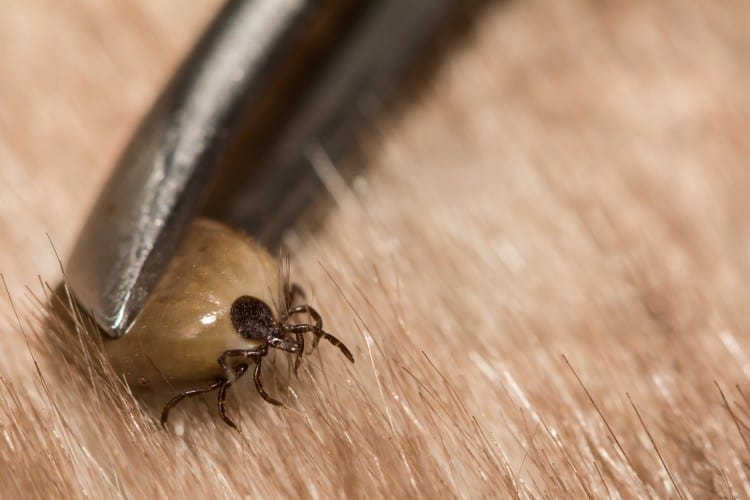Ticking Time Bomb: A 36-48 Hour Window Justifies Parasite Prevention

There are few moments worse than finding a tick on yourself or someone you love. Of course, we quickly jump to frightening conclusions of tick-borne illness, and for good reason. Incidents of Lyme disease are rising, and can have disastrous implications for pets and people alike.
All this is to say, your pet’s parasite prevention must remain a high priority as we approach spring and summer.
Regional Frights
Ticks that carry and spread Lyme disease heavily populate the northeast and the Great Lakes regions, but tick-borne Lyme and other bacterial diseases have been found in all 50 states.
Tricky Ticks
Ticks lie in wait for their prey to draw near. They don’t have wings or springy legs like fleas. Instead, they detect breathing, body odor, temperature, and vibration of their prey. Creepily, they extend their front legs while steadying themselves with third and fourth legs (on leaves, branches, fallen sticks, shrubbery, grass, etc.) and reach out to climb onto their host.
Blood Meal, Right on Time
It may take some time for a tick to start feeding. On humans, ticks have to find their way around socks or sleeves. On pets, especially ones with thicker hair, ticks may take a little longer to find a spot on the skin.
If they latch on with razor sharp mouth parts, they’ll start sucking on blood.
Stuff of Nightmares
As if that weren’t terrifying enough, the bacteria we mentioned earlier, Borrelia Burgdorferi, comes up from the tick’s gut to the salivary glands and directly into the bloodstream of their prey.
The Good News?
If there is a silver lining to this scenario it’s that ticks have to be attached to their prey for 36-48 hours for the bacteria to transfer. If you go for a hike with your dog, be sure to closely inspect the fur and skin for any ticks as soon as possible after returning home. Waiting to do this after a day or so increases the risk of possible transmission.
The Safe Side
If a tick is found, you must properly remove the tick and seal it in a lidded jar of rubbing alcohol in case we need to test it later.
Although the type of tick you remove from your pet may not carry Lyme disease, it’s possible they could still transit:
- Rocky Mountain Spotted Fever
- Ehrlichia
- Babesiosis
- Anaplasmosis
Blacklegged or deer ticks are the usual suspects that spread the Lyme disease bacteria. But all species, such as brown dog ticks, Rocky mountain wood ticks, or lone star ticks should be handled with equal care.
Parasite Prevention Matters
Vaccines cannot protect your pet from all tick-borne disease, and won’t prevent a pet from unwittingly bringing a tick inside the home. However, with a proactive approach to parasite prevention you can drastically reduce risk.
- Limit tick habitat on your property (low hanging branches, dense undergrowth)
- Check your pet every day for ticks (pay close attention to their legs, ears, collar area, eyes, and tail)
- Keep an eye out for any changes in appetite or behavior
Always an important aspect of responsible pet ownership, Beverly Hills Veterinary Associates are always available to help you with your pet’s year-round parasite prevention.
